Disclosure: This article contains affiliate links. We may earn a commission from purchases at no extra cost to you, which helps our travel content.
The first time I visited Seoul, I arrived with my sketchbook and camera, expecting to capture the city's architectural contrasts and vibrant street scenes. What I hadn't anticipated was how profoundly the street food would captivate me. There's something mesmerizing about watching vendors work their craft – hands moving with practiced precision, steam rising into the cool evening air, creating a misty halo around the stalls that line Myeongdong and Gwangjang Market. As someone who sees the world through an artist's lens, Seoul's street food scene is a masterclass in composition: the crimson glow of tteokbokki sauce, the golden crispness of hotteok, the delicate folds of mandu dumplings. Each bite tells a story of culinary traditions passed through generations, adapted for the fast-paced rhythm of modern Seoul life. After five visits to this captivating metropolis, I've compiled my definitive guide to the street foods that define Seoul's gastronomic landscape – dishes that don't just satisfy hunger but offer a sensory portal into Korean culture.
The Fiery Classics: Spice-Forward Street Foods
Seoul's relationship with heat is evident in its most beloved street foods. The city pulses with flavors that awaken every sense, creating an addictive dance between pleasure and pain that keeps you coming back for more.
Tteokbokki (떡볶이) stands as the undisputed champion of Korean street food. These chewy rice cakes bathed in a vibrant gochujang sauce create a symphony of textures – pillowy softness yielding to a satisfying chew, all enveloped in that distinctive sweet-spicy sauce that stains your fingers (and sometimes your shirt, if you're as enthusiastic an eater as I am). During my last visit, I spent an entire afternoon sketching vendors at Sindang-dong Tteokbokki Town, where the original recipe was supposedly created in the 1950s. There's something hypnotic about watching the cakes bubble and dance in their crimson bath.
Sundae (순대), Korean blood sausage, might sound intimidating to the uninitiated, but its mild flavor and fascinating texture make it a perfect companion to tteokbokki. The combination of glass noodles, glutinous rice, and various seasonings stuffed into pig intestine creates a mosaic of flavors that reveals itself gradually with each bite. I remember sharing a plate with two backpackers from Germany at Gwangjang Market – their initial hesitation transformed into delight within seconds.
Ddeokgalbi (떡갈비) skewers offer respite for those seeking protein amid the carb-heavy options. These grilled minced beef patties, often mixed with pork and shaped around skewers, carry the intoxicating aroma of sesame oil and garlic. The vendors typically brush them with a sweet-savory glaze as they grill, creating a caramelized exterior that gives way to juicy meat within.
On chilly evenings, nothing compares to Odeng/Eomuk (오뎅/어묵) – fish cake skewers swimming in a steaming, golden broth. The savory, umami-rich broth becomes as important as the fish cakes themselves; locals often request a cup of the broth alone to warm their hands and souls. I've captured countless photographs of people gathered around these stalls, steam rising around their faces in the winter air – moments of community and comfort found in the simplest of foods.

💡 Pro Tips
- For authentic tteokbokki, head to Sindang-dong Tteokbokki Town where the dish was supposedly invented
- At Gwangjang Market, look for stalls with the longest lines of locals – they invariably offer the best quality
- Most vendors will adjust spice levels if you ask politely – the phrase 'deol maepge juseyo' means 'less spicy please'
Sweet Sensations: Desserts & Sweet Treats
The sweet side of Seoul's street food scene offers a fascinating counterpoint to the city's spice-forward favorites. These treats have become my ritual rewards after long days of urban exploration and photography sessions.
Hotteok (호떡) has claimed a special place in my heart – and sketchbook. These sweet pancakes filled with a molten mixture of brown sugar, cinnamon, and crushed nuts are pressed flat on a sizzling griddle until golden and crisp. The theater of hotteok preparation is captivating: vendors flatten the dough with specialized circular presses, creating a satisfying hiss as the sugary filling begins to caramelize. During winter months, the steam rising from freshly made hotteok creates a dreamy atmosphere that I've tried to capture in countless photographs. Be forewarned – the filling is volcanic when fresh, as I discovered on my first bite years ago!
Bungeoppang (붕어빵) – fish-shaped pastries filled with sweet red bean paste – represent the whimsical side of Korean street food. The contrast between the crisp, golden exterior and the velvety sweet filling creates a perfect textural balance. I've spent entire afternoons photographing the specialized molds where these treats take shape, fascinated by how the vendors pour and flip them with rhythmic precision. During my last winter visit, I carried a compact camera to document these moments without drawing too much attention – its discreet size but professional image quality made it perfect for capturing authentic street food scenes.
Gyeranppang (계란빵) or 'egg bread' offers a delightful hybrid between sweet and savory. These oblong-shaped breads cradle a whole egg that bakes into the sweet dough, creating a portable breakfast or snack. The slight sweetness of the bread complements the savory egg perfectly. I've sketched vendors preparing these countless times, fascinated by how they crack eggs with one hand while pouring batter with the other – a dance of culinary efficiency.
Dalgona (달고나) experienced a global renaissance during the pandemic, but in Seoul, it's been a nostalgic street sweet for decades. Watching vendors create these honeycomb toffee treats is pure performance art – they melt sugar in a ladle over coals, add baking soda, then press the mixture flat before imprinting patterns. The challenge traditionally offered to children is to eat around the stamped shape without breaking it. I spent an afternoon learning this craft from a vendor in Insadong who's been making dalgona for over 40 years – his weathered hands moved with the confidence that comes only from decades of practice.

💡 Pro Tips
- For the best hotteok in Seoul, visit Kwangjang Market where some vendors have been perfecting their recipe for generations
- Bungeoppang tastes best in winter months when the contrast between the hot pastry and cold air is most satisfying
- When buying dalgona, look for vendors who make it fresh – the honeycomb structure is crispest within the first hour
Savory Delights: Dumplings, Pancakes & Fried Goodness
Seoul's savory street food offerings provide a window into Korea's culinary soul – dishes that balance complex flavors while remaining accessible and portable. These are the foods I find myself craving months after returning to Sydney, the tastes that linger in memory.
Mandu (만두) – Korea's answer to dumplings – come in endless varieties across Seoul. Whether steamed, boiled, or pan-fried, these parcels offer a perfect bite-sized explosion of flavor. My favorite remains the massive wang mandu (king dumplings) found at Gwangjang Market, their translucent skins revealing the savory filling within. I've spent hours watching vendors fold these dumplings with remarkable speed, their fingers creating perfect pleats with a rhythm that speaks to decades of practice. There's something meditative about observing this craft – a reminder that some skills cannot be rushed or automated.
Bindaetteok (빈대떡) – mung bean pancakes – offer a textural experience unlike any other street food. At Gwangjang Market, vendors grind soaked mung beans into a paste before mixing in kimchi, pork, and vegetables. The resulting pancakes are fried to golden perfection – crisp exteriors giving way to a tender, savory interior. I remember watching an elderly vendor who couldn't have been younger than 80, wielding her spatula with the confidence of someone who had made thousands upon thousands of these pancakes. When I complimented her technique through my limited Korean, she insisted I photograph her next batch – proudly displaying her craft for my camera.
Gimbap (김밥) might appear simple – seaweed rice rolls filled with vegetables and protein – but their balanced flavors and perfect portability make them a street food staple. I've sketched countless gimbap vendors, fascinated by the rainbow of ingredients laid out in precise rows before being rolled with practiced efficiency. During my last visit, I discovered mayak gimbap ('drug' gimbap) – smaller, addictive versions served with a mustard-soy dipping sauce that lives up to its habit-forming name.
Korean Fried Chicken deserves special mention despite often being served in dedicated restaurants rather than street stalls. The double-frying technique creates an impossibly crisp exterior while maintaining juicy meat within. The variety of glazes – from spicy gochujang to sweet garlic soy – offers something for every palate. On my last visit, I discovered a small vendor near Hongik University who serves bite-sized fried chicken in paper cups – perfect for walking and exploring. I documented my fried chicken adventures with my mirrorless camera – its film simulation modes perfectly captured the golden-hour light on the glistening, crispy chicken skin.
Twigim (튀김) – assorted tempura-style fried vegetables, seafood and more – offers the perfect canvas for Korea's dipping sauces. I'm particularly fond of goguma twigim (sweet potato fritters) and gimmari (seaweed-wrapped glass noodles, battered and fried). There's something universally appealing about perfectly fried food, and Korean vendors have mastered the art of keeping the oil at the perfect temperature to ensure crispness without greasiness.
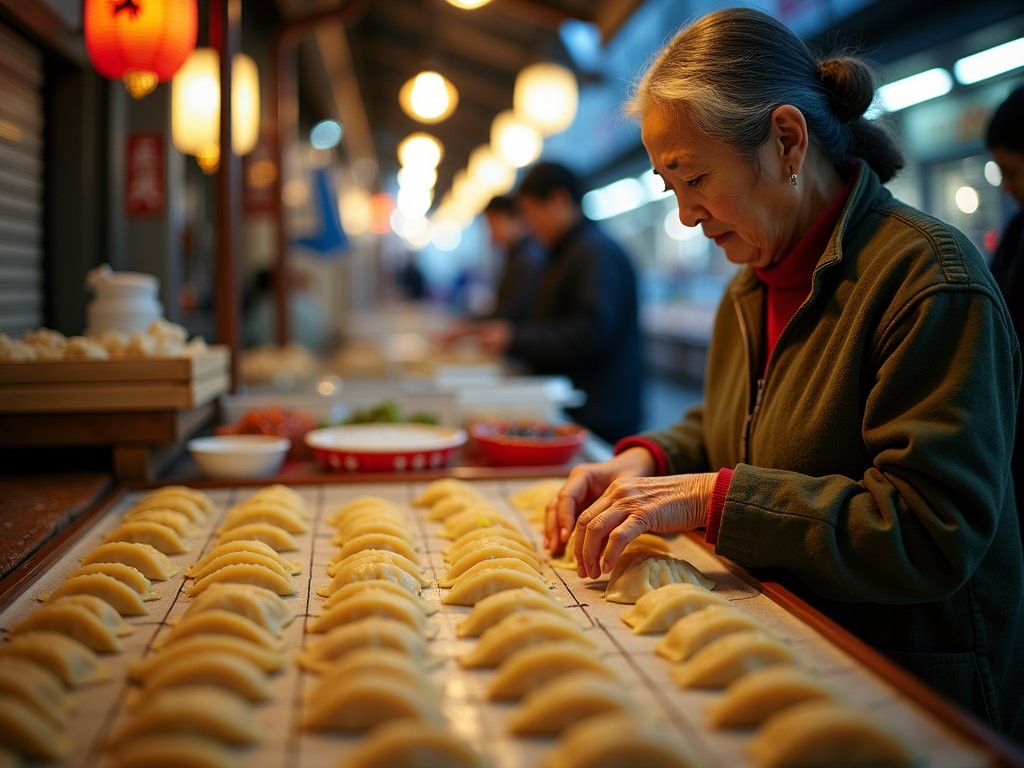
💡 Pro Tips
- For the best mandu experience, visit Gwangjang Market in the morning when the dumplings are freshly made
- When ordering bindaetteok, request it with extra kimchi for a perfect balance of flavors
- Most twigim vendors will fry items to order – wait a few extra minutes for the freshest experience
Comfort in a Cup: Soups & Warming Dishes
Seoul's climate of distinct seasons creates the perfect backdrop for warming street foods that provide comfort against winter winds or summer rains. These dishes exemplify how Koreans have transformed necessity into culinary art.
Eomuk-guk (어묵국) – fish cake soup – represents Seoul street food at its most elemental. Skewers of processed fish cake simmer in a deeply flavored broth made from kelp, dried anchovies, and aromatics. On cold evenings, vendors become beacons of warmth, their stalls surrounded by people seeking respite from the chill. The ritual is simple but profound – select your skewers, enjoy them with a cup of the golden broth, then return the empty cup. I've captured this scene countless times in my sketchbook – the steam rising around faces illuminated by the stall's lights, creating atmospheric portraits that speak to Seoul's winter soul.
Dak-gomtang (닭곰탕) – a soul-warming chicken soup – offers profound comfort in a paper cup. Unlike the elaborate version served in restaurants, the street food iteration is simplified but no less satisfying. Tender chicken, chewy rice cakes, and glass noodles swim in a milky broth that's been simmered for hours. During a particularly rainy April visit, I sheltered under the awning of a dak-gomtang vendor near Dongdaemun, sketching fellow travelers huddled around the steaming pots while rain created abstract patterns on the pavement.
Jjigae (찌개) varieties – from kimchi to doenjang (soybean paste) – appear at certain specialty street vendors, particularly in winter months. Served bubbling hot in stone bowls, these stews offer a complete meal in one vessel. I remember discovering a sundubu-jjigae (soft tofu stew) vendor near Bukchon Hanok Village who had transformed a traditional hanok doorway into a tiny kitchen. The contrast between the ancient architecture and the modern paper cups of fiery stew created a perfect visual metaphor for Seoul itself.
Gukbap (국밥) – rice served in soup – comes in numerous regional varieties across Korea. In Seoul's markets, dwaeji-gukbap (pork soup with rice) remains particularly popular. The cloudy, collagen-rich broth surrounds tender pork and rice, creating a filling meal that sustains market workers and visitors alike. I've documented vendors ladling this soup at dawn in Noryangjin Fish Market, serving the earliest workers before most of the city has awakened.
Navigating Seoul's street food scene can be overwhelming for first-time visitors. I've found that carrying a Korean phrase book opens doors to authentic experiences – vendors appreciate even simple attempts at Korean, often responding with generous portions and friendly conversation. The most memorable meals I've had in Seoul have come from pointing, smiling, and using my limited vocabulary to connect across cultural boundaries.
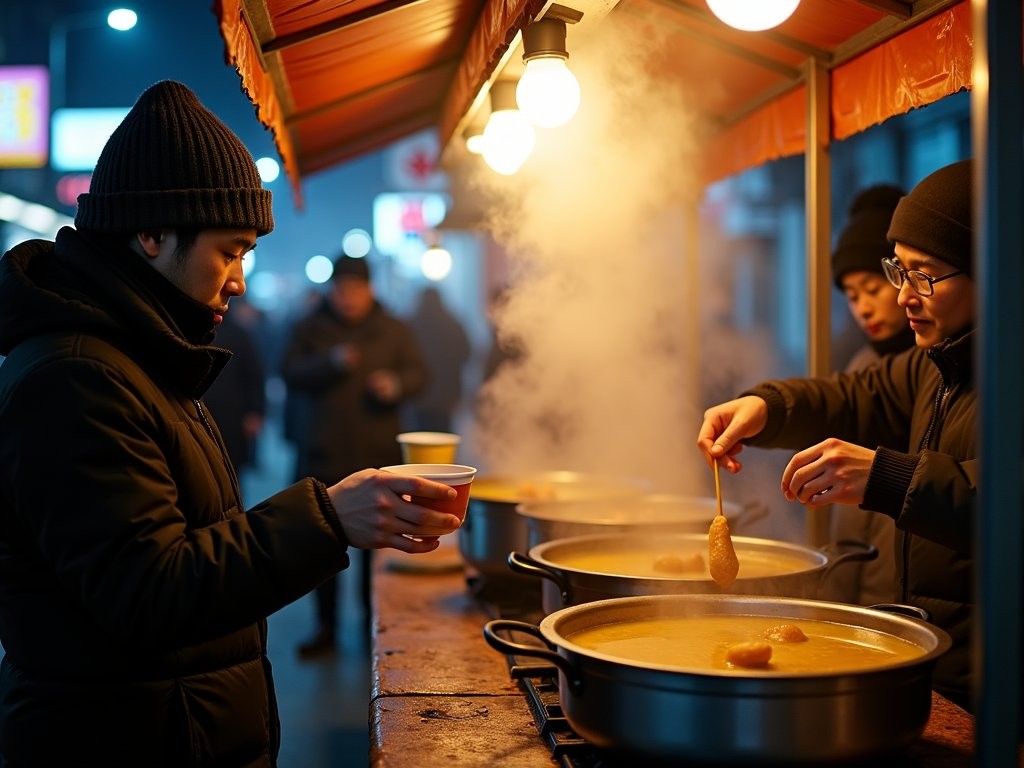
💡 Pro Tips
- For eomuk-guk, look for stalls where the broth is clear golden rather than cloudy – a sign of quality ingredients and proper simmering
- Most soup vendors will offer free refills of broth – just return your cup and ask politely
- During winter, seek out pojangmacha (covered street food tents) for the most atmospheric soup experience
Modern Innovations: Fusion & Instagram-Famous Treats
Seoul's street food scene isn't merely traditional – it's constantly evolving, embracing global influences while maintaining its distinctive Korean identity. These newer creations showcase the innovative spirit that makes Seoul such a dynamic culinary destination.
Tornado Potato (회오리 감자) exemplifies Korean street food innovation – a whole potato spiral-cut on a skewer, deep-fried, and seasoned with flavored powders from cheese to honey butter. The visual impact is undeniable; I've watched tourists queue specifically to photograph these architectural potato creations. Beyond their Instagram appeal, they offer a satisfying combination of crisp edges and tender interior – the humble potato transformed into something extraordinary through technique and presentation.
Korean Corn Dogs have undergone a remarkable evolution from their American counterparts. Seoul vendors coat sausages (and sometimes mozzarella cheese) in a sweet batter before rolling them in unconventional coatings – from french fries to ramen noodles – then frying them to golden perfection. The final touch often involves intricate sauces and powders that create a sweet-savory flavor profile unique to Korea. During my last visit, I documented the process at Myeongdong's famous Arirang Hotdog, where the vendor created a dazzling display of corn dog artistry for my camera.
Croffle – the croissant-waffle hybrid – represents Seoul's talent for adapting Western desserts. Croissant dough pressed in a waffle iron creates a pastry with caramelized exterior ridges and a buttery, layered interior. Toppings range from simple powdered sugar to elaborate fruit, cream, and chocolate combinations. I discovered a vendor near Ehwa Women's University who creates croffles in the shape of flowers – a detail that exemplifies the aesthetic consideration given to even the most casual street foods in Seoul.
Bingsu (빙수) – shaved ice desserts – have transformed from simple summer treats to elaborate constructions worthy of fine dining establishments. While traditional patbingsu features red beans, modern interpretations incorporate everything from fresh mango to tiramisu components. What makes Seoul's street versions remarkable is their precision and quality despite being prepared in tiny stalls. I spent an afternoon sketching a vendor in Insadong who created miniature bingsu landscapes – complete with chocolate soil and sugar glass – in paper cups for delighted tourists.
Documenting these innovative creations requires equipment that can capture both their visual impact and the environments in which they're served. My smartphone gimbal has proven invaluable for shooting smooth video of vendors in action, allowing me to create compelling social media content that captures both the food and the atmospheric context of Seoul's vibrant markets.
What fascinates me most about these modern innovations is how they maintain connection to Korean culinary philosophy despite their contemporary appearances. The attention to texture, the balance of sweet and savory, and the consideration of visual presentation all reflect deeply rooted Korean food values – even when the vessel is a croissant-waffle hybrid or a potato tornado.
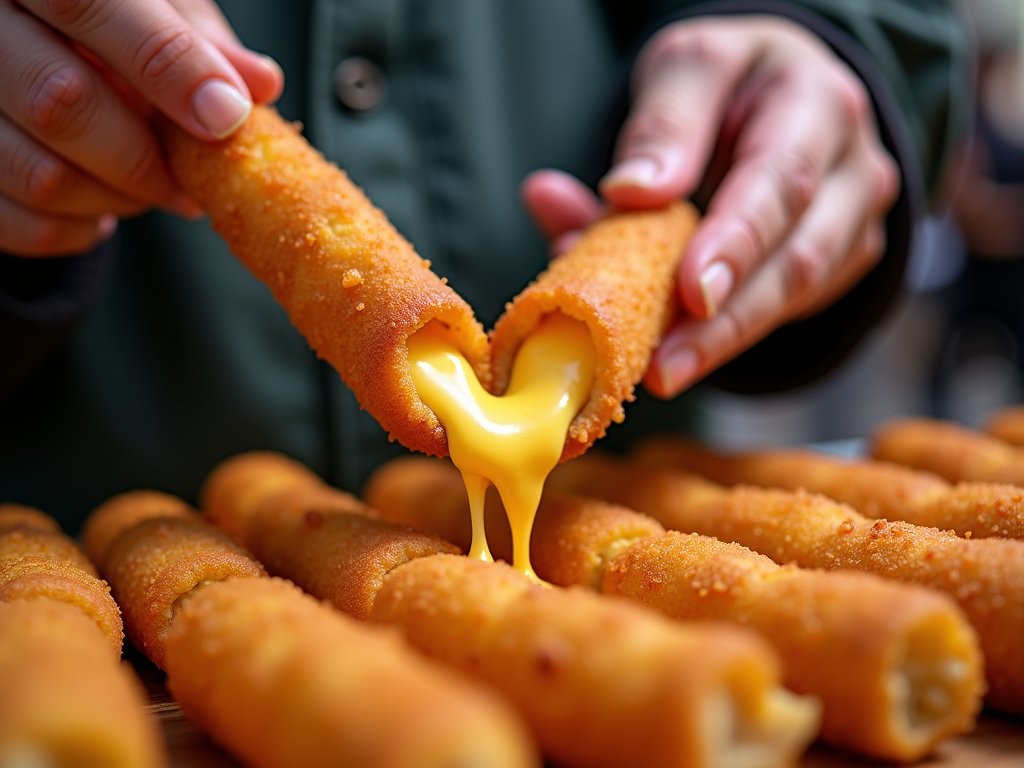
💡 Pro Tips
- For the most photogenic Korean corn dogs, visit Myeongdong in the afternoon when vendors have perfected their setups for the day
- Most modern street food vendors speak some English and are accustomed to tourists – don't be shy about asking questions
- Innovative treats tend to have the longest lines – visit before 11am or after 2pm to avoid peak waiting times
Navigating Seoul's Street Food Markets: Where to Go
Seoul's street food isn't distributed randomly – it congregates in markets and districts that have developed their own specialties and atmospheres. Understanding these geographic distinctions enhances the experience, allowing visitors to target specific culinary adventures.
Gwangjang Market (광장시장) stands as Seoul's temple to traditional street food. Dating back to 1905, this covered market houses hundreds of vendors specializing in dishes that have defined Korean cuisine for generations. The market's narrow aisles pulse with energy from morning until evening, with vendors calling out to passersby and the sizzle of bindaetteok creating a distinctive soundtrack. What I love most about Gwangjang is the communal dining experience – strangers share benches at stainless steel counters, breaking down the barriers that often separate travelers from locals. On my first visit, I found myself seated between an elderly Korean businessman and a young American couple, all of us communicating through appreciative nods and shared sauce dishes despite our language differences.
Myeongdong (명동) represents street food at its most cosmopolitan. This shopping district transforms each evening as vendors wheel out their carts, creating a gastronomic wonderland that caters particularly to international tastes. Here you'll find the most photogenic and innovative creations – from rose-shaped ice cream to cheese-filled seafood. The theatrical presentation makes Myeongdong perfect for food photography, especially in the evening when the stalls are illuminated by string lights and colorful signage. I've spent entire evenings here with my camera, capturing the interplay of neon reflections on the glistening street food creations.
Dongdaemun (동대문) offers a different rhythm – with many vendors operating late into the night to serve the fashion district's nocturnal shoppers. The area around Dongdaemun Design Plaza becomes particularly lively after dark, with vendors specializing in filling, affordable meals rather than novelty items. This is where I go when seeking authentic tteokbokki, sundae, and other classic dishes at 2am – the vendors here cook for locals rather than tourists, resulting in more traditional preparations and generous portions.
Tongin Market (통인시장) offers a unique concept with its "Dosirak" lunchbox program – visitors purchase tokens to exchange for small portions from various vendors, creating personalized lunchboxes. This system provides the perfect opportunity to sample numerous dishes without commitment. The market's location near Gyeongbokgung Palace makes it an ideal lunch stop during sightseeing. I discovered this gem during my second visit to Seoul and have returned on every subsequent trip, appreciating how the token system encourages exploration beyond comfort zones.
University Districts like those surrounding Hongik and Ehwa Universities offer street food with youthful energy and student-friendly prices. These areas tend to showcase trendier creations that appeal to young Koreans – the dishes that will likely become tomorrow's classics. I've found some of my most interesting food discoveries in these districts, where competition drives innovation and vendors must constantly evolve to capture students' attention and limited budgets.
For travelers seeking to document their Seoul street food journey, I recommend the travel journal which provides maps of key districts and blank pages for notes or sketches. I've filled several of these during my Seoul visits, creating a personal atlas of favorite vendors and discoveries that guides my return visits.
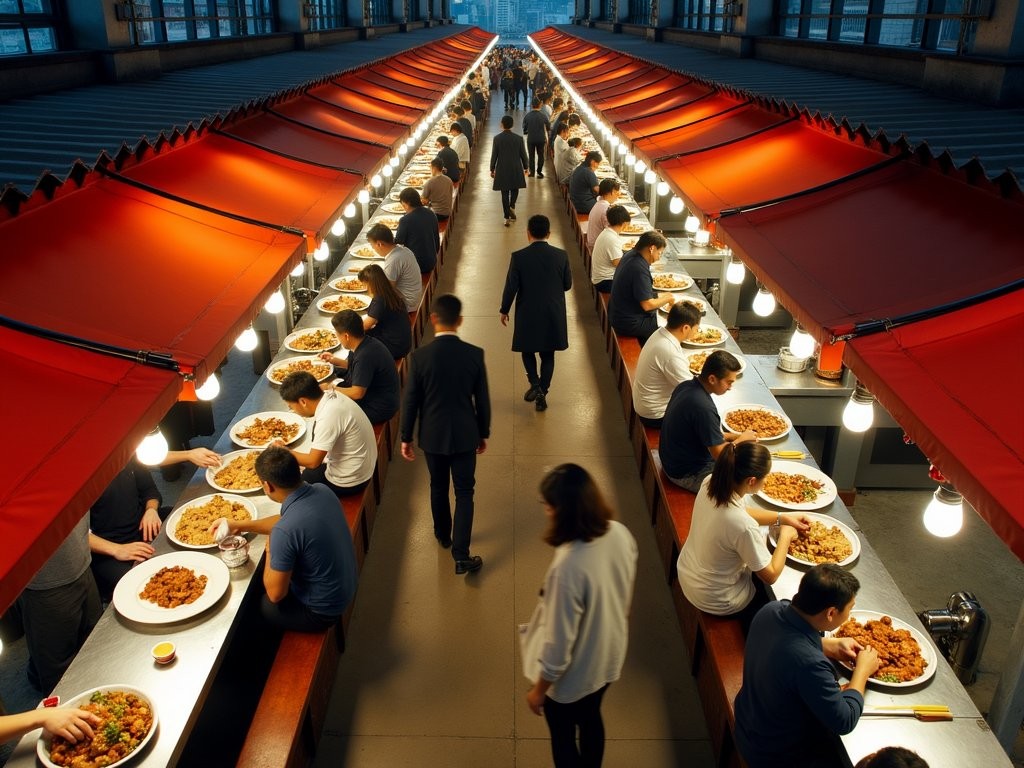
💡 Pro Tips
- Visit Gwangjang Market around 11am when most vendors are open but before the major lunch rush begins
- In Myeongdong, food stalls typically set up around 4pm and operate until 10pm or later
- University district vendors offer the best value around 3-5pm when they compete for students finishing classes
Final Thoughts
As I pack away my sketchbook after another Seoul food adventure, I'm struck by how these seemingly simple street foods embody the soul of Korean culture – the perfect balance of tradition and innovation, the attention to texture and visual presentation, the communal joy of shared meals. Beyond the 15 must-try items I've highlighted, Seoul offers countless other discoveries waiting in steaming pots and sizzling griddles across the city. What makes this culinary landscape truly special isn't just the food itself, but the stories behind each dish – the vendors who've perfected a single recipe over decades, the adaptation of global influences through a distinctly Korean lens, the way certain flavors become inextricably linked with memories of Seoul's streets and seasons. Whether you're planning your first visit or returning to deepen your exploration, approach Seoul's street food with curiosity and openness. Engage with vendors, watch their techniques, and don't hesitate to try dishes that challenge your culinary comfort zone. The most memorable bites are often found in the most unassuming stalls, served by hands that have prepared the same dish thousands of times with unwavering dedication to their craft.
✨ Key Takeaways
- Seoul's street food scene balances deeply traditional dishes with innovative modern creations
- Different markets and districts specialize in distinct street food experiences – plan visits accordingly
- Don't be deterred by language barriers – vendors are accustomed to communicating through pointing and gestures
- The most authentic experiences often come from following local crowds rather than guidebook recommendations
- Street food in Seoul isn't just about eating – it's about participating in a living cultural tradition
📋 Practical Information
Best Time to Visit
year-round, though street food is especially enjoyable in spring (April-May) and fall (September-October) when temperatures are mild
Budget Estimate
₩30,000-50,000 per day for street food exploration (approximately $25-40 USD)
Recommended Duration
Dedicate at least 3 days to properly explore Seoul's diverse street food scenes
Difficulty Level
Beginner - Most Vendors Are Accustomed To Tourists And Many Dishes Are Recognizable Or Have Visual Displays





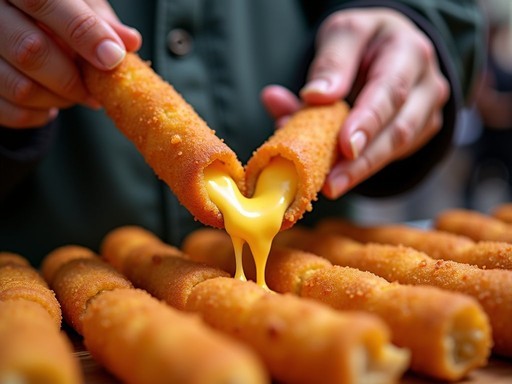




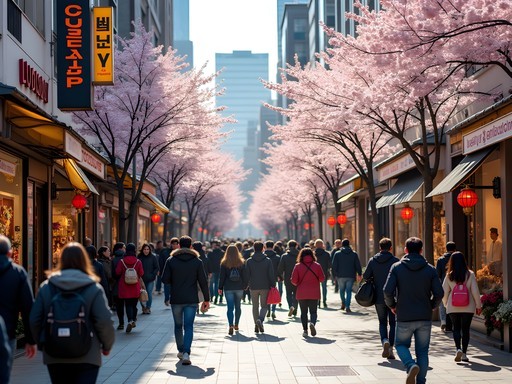
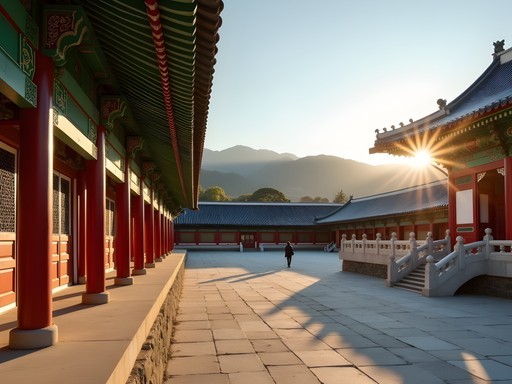
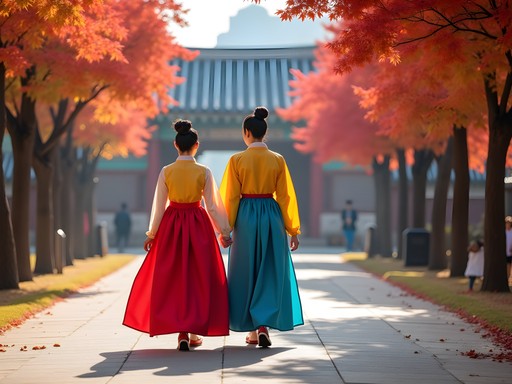
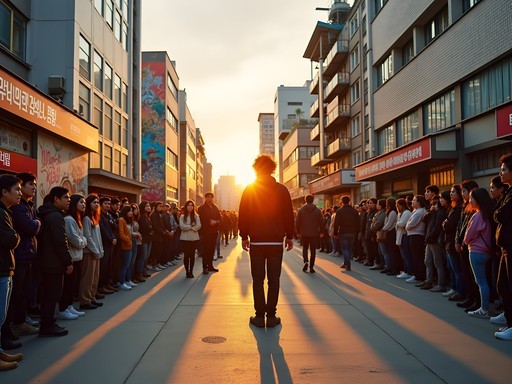

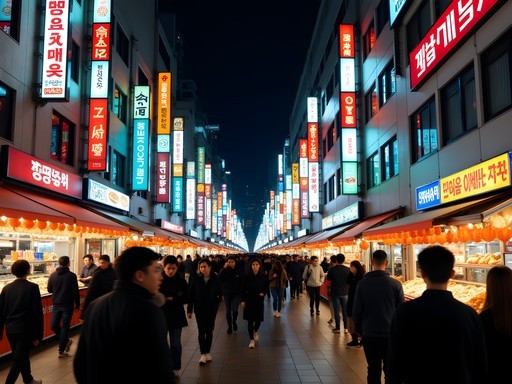

Comments
coolseeker
Your post convinced me to be more adventurous on my trip last week! I'm usually a picky eater but ended up loving the fish-shaped bungeoppang with red bean paste (never thought I'd enjoy that). The only thing I couldn't handle was the beondegi (silkworm pupae) - the smell alone was too much for me! Anyone else brave enough to try those?
Hunter Thompson
I tried them on a dare! Texture is... interesting. Like nutty little crunchy-soft pods. Definitely an acquired taste, but hey, travel is about pushing boundaries, right?
winterlegend
Just got back from Seoul and tried 12 of these 15! The corn dogs were my favorite - that potato coating is genius!
sunsetguide
Which food market would you recommend for a first-timer? Gwangjang or Namdaemun? Only have time for one!
Nicole Russell
Gwangjang for sure! It's more concentrated with food stalls and has that authentic vibe. The bindaetteok (mung bean pancakes) there are legendary. Namdaemun is great too but more spread out with other shopping.
roammaster
I'm allergic to seafood - will I struggle to find street food options in Seoul?
coolseeker
Not at all! I have the same issue. Stick to things like Korean fried chicken, mandu dumplings (check they're not seafood filled), tteokbokki (rice cakes), hotteok (sweet pancakes), and gimbap (just ask for ones without fish). There's tons of non-seafood options!
Hunter Thompson
Mate, this post is spot on! I backpacked through Seoul last autumn and lived off street food for two weeks. Saved a ton of cash and had some of the best meals of my life. The odeng (fish cake soup) saved me on those chilly nights. Pro tip for anyone going: download Naver Map instead of Google Maps - it'll show you all the tiny food stalls that Google misses. I found this incredible pojangmacha (tent bar) near Hongdae that served the most amazing soondae (blood sausage) with a free soju shot. I documented everything in my food journal which was perfect for recording all these food adventures.
winterlegend
Is Naver Map available in English? I don't speak any Korean but really want to find those hidden spots!
Hunter Thompson
Yes! There's an English version. Not perfect translation but totally usable. Way better than getting lost with Google Maps!
traveltime3429
Those egg breads look amazing! Adding to my list for sure.
Nicole Russell
Amit, your post brought back so many memories! I was in Seoul last spring and became OBSESSED with tteokbokki. Those chewy rice cakes in that spicy sauce are seriously addictive. I found this tiny stall in Myeongdong where the ajumma added cheese on top that melted into the sauce - game changer! Did you try the hotteok with the brown sugar filling? I still dream about those. Your sketches really capture the energy of the street food scene there!
coolseeker
Nicole, where exactly was that tteokbokki place in Myeongdong? Going next month and definitely want to try it!
Nicole Russell
It was down one of those side streets near the main shopping area - look for a small red tent with an older lady cooking. There's usually a line of locals. Can't miss it!
nomadmaster
Pro tip: hit up Myeongdong around 4pm when vendors are just setting up. Less crowded and everything's freshly made!
Ana Robinson
Living in Tokyo but Seoul is just a quick flight away for us, and we visit about twice a year specifically for food adventures with our family! Amit, I love how you captured the contrast between the fiery classics and the sweet treats - that's exactly how we structure our food tours with the kids. We always start with mild options and work our way up to spicier dishes as the trip progresses. One thing I'd add to your list is soondae (blood sausage) - it sounds intimidating but it's actually quite mild and my children surprisingly love it! The night markets around Dongdaemun are perfect for late-night food crawls if anyone's looking for spots that are open past midnight.
waveninja
Are the night markets kid-friendly that late?
Ana Robinson
@waveninja Absolutely! Seoul is incredibly safe and you'll see plenty of local families with children out until 10-11pm, especially in summer. Just be prepared for the energy - my kids get a second wind from all the excitement!
starmaster
That egg bread (gyeran-ppang) is life-changing! Best breakfast ever.
Venture X
Premium card with 2X miles, $300 travel credit, Priority Pass